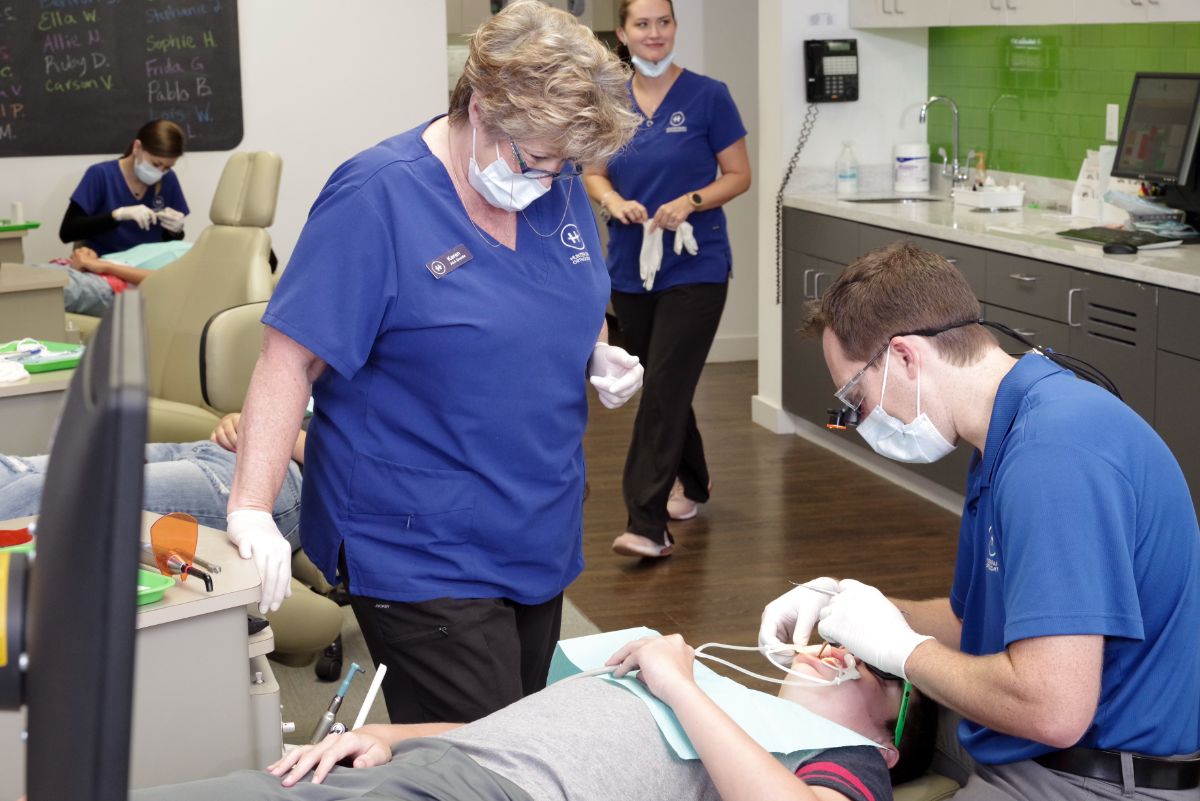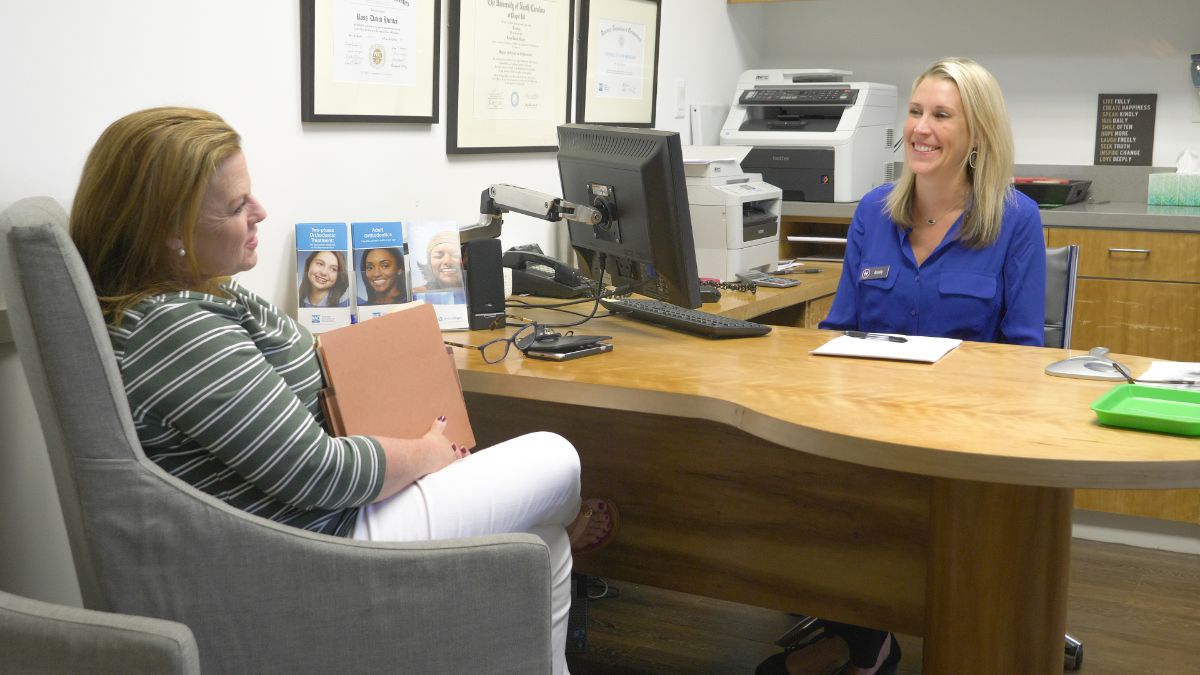There’s no doubt that choosing to undergo orthodontic treatment with braces or aligners is a pretty big deal. After all, you’re investing your time and your finances into achieving a healthier, straighter smile! Once you see the results, it feels like a huge accomplishment, and you’re ready to share your new smile with the whole world. You leave your orthodontist’s office walking on air, with the retainer they’ve given you in hand and every intention to wear it exactly the way you’re supposed to. At first, that’s just what you do! As time goes on, however, it starts to slip your mind here and there. You may leave your retainer out a night or two, then forget it for a couple of weeks at a time. Then one day you wake up and realize that you aren’t even sure where it is anymore! This is where touch-up treatment for adult orthodontic relapse can come in.
You definitely don’t want to undo all your treatment, so you set a reminder to call your orthodontist about replacing your missing retainer. Life gets in the way, however, and before you know it, more time has passed. Then suddenly you realize with dismay that your smile doesn’t look or feel the same as it did before. What are your options now?
If this scenario sounds familiar, don’t worry. You’re certainly not alone! We see many adult patients here at Hunter Family Orthodontics who are dealing with this same situation. Dr. Hunter is experienced in successfully correcting orthodontic relapse, so if your smile isn’t what it used to be, we can help you get it back on track. Let’s explore a little more about what an orthodontic relapse is, what causes them, and how our expert team can help restore your smile.
What is an orthodontic relapse?
An “orthodontic relapse” is what happens when the teeth begin shifting back towards their previous place in the mouth after completing orthodontic treatment. A short-term relapse is one that happens less than one year after the completion of treatment, while a long-term relapse occurs more than a year after finishing treatment.
Orthodontic relapse is common, with almost half of all orthodontic patients experiencing some level of relapse in their first post-treatment decade. This has caused many in the orthodontic field to reconsider their approach to retainer wear in recent years. A large number of adults who have dealt with a relapse were told as teens that they could discontinue wearing their retainer after a year or two, but modern orthodontic wisdom tells us that retainers should actually be worn at least part-time for life. That can sound like a lot of commitment, but in most cases, retainers will only need to be worn at night after an initial period of adjustment.
What can cause an orthodontic relapse?
The most common cause for teeth shifting after treatment is irregular retainer use. Once the active phase of treatment is complete, the teeth and surrounding bone and gums still need time to solidify in their new locations. Wearing a retainer as directed helps protect the teeth from the forces that are always trying to pull them back to their previous positions. It also assists with long-term stabilization.
There are other possible causes of an orthodontic relapse, including:
Teeth grinding
If you grind your teeth, you probably already know about the damage it can cause. Chronic tooth grinding produces a continuous force that can place a strain on your teeth over time, and may eventually alter your bite. This can lead to misalignment.
Tooth loss
If you’ve lost one or more teeth due to trauma, decay, or periodontal disease, the teeth surrounding that empty space may begin to drift towards it. If this is left uncorrected for a long enough period of time, it can eventually lead to a misaligned bite.
Genetics and aging
Even those naturally blessed with a beautiful smile may notice their teeth shifting a bit as they grow older. This is a common occurrence, especially in the front teeth, which tend to be more susceptible to shifting under pressure due to the thinning enamel.
How are orthodontic relapses treated?
There are a few different options available to us when it comes to addressing an orthodontic relapse. Dr. Hunter will choose the best one for you based on your specific needs and the severity of your case.
Monitoring your teeth
Even with good genes and complete compliance, some minor tooth movement will occur for everyone at some point. That’s due to the bone and gums that support your teeth changing as you age, causing your teeth to naturally shift. Retainers can also become slightly distorted with wear and become less effective over time.
If you’ve worn your retainer exactly as directed and we observe only minor shifting of your teeth, we may be able to leave things as they are for the time being and simply monitor your teeth for any further shifting.
Creating a new retainer
Some types of minor movement do require treatment, but can often be corrected with a new or replacement retainer. If you’ve lost or broken your previous retainer, this will be one of the first steps we take. Generally speaking, fixed retainers are good for maintaining the alignment of the lower teeth, while removable aligners will usually be recommended for the upper teeth.
Retreatment
If Dr. Hunter discovers a significant orthodontic relapse during your consultation, he may recommend retreatment with braces or aligners. As an adult, you might not love the thought of dealing with traditional braces again, but fortunately, we’re able to offer a variety of treatment options to correct your relapses from slight to complex. This includes subtle treatment options like clear braces and Invisalign clear aligners.
Get a smile you love again with Hunter Family Orthodontics
Whatever the cause of your orthodontic relapse, our expert team is here to help you recover the smile you love. To learn more touch-up treatment for an orthodontic relapse, get in touch today to schedule your FREE consultation!



